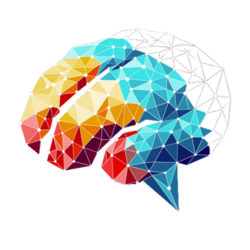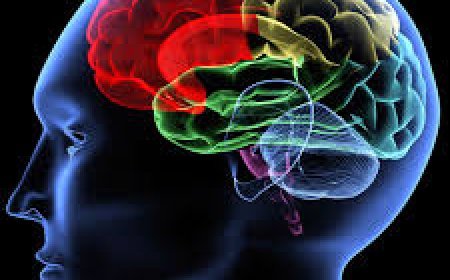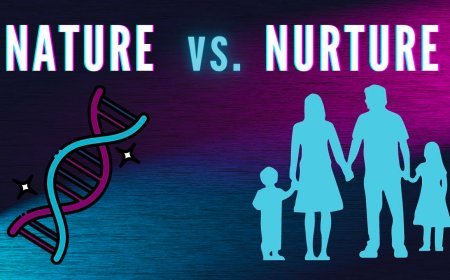Mastering the Mind's Blind Spots
The good news is that while we can't eliminate cognitive biases entirely, we can become aware of them and implement strategies to mitigate their impact on our analytical processes. Awareness is the first and most crucial step.

While cognitive biases are an undeniable part of the human condition, hardwired into our very thought processes as shortcuts for efficiency, they are not insurmountable obstacles to rigorous analysis. The true power of intelligence lies not just in recognizing that these biases exist, but in equipping individuals with tangible, actionable techniques and ideas to systematically unmask and mitigate their influence. This proactive approach transforms passive awareness into active intellectual defense.
-
Cultivate Metacognition (Thinking About Your Thinking):
- Technique: Develop a habit of self-reflection during analysis. Regularly pause and ask: "Why am I thinking this way? What assumptions am I making? Could I be missing something?"
- Idea: Incorporate "bias checklists" into analytical workflows. Before finalizing a report or decision, review a list of common biases and explicitly consider if any might have influenced your analysis.
- Wordings for Self-Reflection: "Is my current line of thinking being unduly influenced by an initial piece of data?" "Am I interpreting this information because it confirms what I already believe?"
-
Actively Seek Disconfirming Evidence (Countering Confirmation Bias):
- Technique: Make a conscious effort to search for information that challenges your initial hypothesis or preferred conclusion. Don't just look for support; actively look for refutations.
- Idea: Implement a "devil's advocate" role in analytical teams or for individual projects. Assign someone to argue against the prevailing view or the analyst's preferred conclusion.
- Idea: Force yourself to articulate arguments against your own position, even if you don't agree with them. This broadens your perspective.
- Wordings to encourage this: "What evidence would disprove this hypothesis?", "Let's explore the counter-arguments for this finding."
-
Use Structured Analytical Techniques (SATs):
- Technique: Employ formal methodologies designed to reduce bias, particularly in intelligence analysis or complex problem-solving. Examples include:
- Analysis of Competing Hypotheses (ACH): Systematically evaluates multiple hypotheses against all available evidence, actively seeking to disprove, rather than confirm, each hypothesis.
- Pre-Mortem Analysis: Imagine that your project has failed. Then, work backward to identify all the reasons why it might have failed. This helps uncover potential flaws or risks that might be overlooked due to optimism bias.
- Idea: Introduce tools or templates that guide users through these structured processes, forcing them to consider multiple perspectives and challenge assumptions.
- Wordings often used in SATs: "If this hypothesis were false, what evidence would we expect to see?", "List all possible reasons for failure."
- Technique: Employ formal methodologies designed to reduce bias, particularly in intelligence analysis or complex problem-solving. Examples include:
-
Consider Multiple Perspectives:
- Technique: Actively engage with individuals who hold different viewpoints or have different expertise. Solicit their input before making a final judgment.
- Idea: Create "diversity of thought" mandates in analytical teams. Encourage different backgrounds, disciplines, and experiences to contribute to complex analyses.
- Wordings to prompt diversity: "How might someone with a different background interpret this data?", "What angles haven't we considered yet?"
-
De-biasing Techniques:
- Technique: For anchoring, make initial estimates independently before encountering any potential anchors. For framing, reframe problems or data in different wordings (e.g., from gain to loss, or vice versa) to see if your perception changes.
- Idea: Conduct "calibration training" for estimations, where analysts repeatedly make estimates and receive feedback on their accuracy, helping them adjust their mental models.
- Wordings for de-biasing: "Let's consider this problem from a 'loss' perspective.", "Generate an initial estimate before looking at the market data."
-
Quantify and Formalize Where Possible:
- Technique: When dealing with probabilities or estimations, try to quantify uncertainty rather than relying on vague qualitative judgments. Using probability trees or Bayesian reasoning can help.
- Idea: Encourage the use of statistical tools and models that can reveal patterns or correlations that might be missed by subjective interpretation.
- Wordings for formality: "What is the likelihood, numerically, of this outcome?", "Let's formalize our assumptions."
-
Take Breaks and Encourage Reflection:
- Technique: Step away from complex analytical tasks, especially if you feel stuck or overly committed to a particular direction. A fresh perspective can reveal biases.
- Idea: Implement "cooling-off periods" for major decisions, allowing time for reflection away from immediate pressure.
- Wordings to encourage this: "Let's sleep on it," "Take a break to clear your head."
As we've explored, the journey to clearer analytical thinking begins with metacognition—the deliberate act of thinking about our own thinking. By cultivating a habit of internal questioning, by asking "Why am I making this assumption?" or "Could my current wordings be reflecting an unconscious preference?", we shine a light on the subtle ways biases might be shaping our conclusions. This self-awareness is the bedrock upon which all other counter-strategies are built.
Crucially, enhancing analytical rigor demands an active pursuit of alternative perspectives. Strategies like actively seeking disconfirming evidence force us beyond our natural inclination to confirm what we already believe. This involves deliberately searching for data that challenges our initial hypotheses, employing the "devil's advocate" mindset, or even formally articulating counter-arguments. Similarly, considering multiple perspectives by engaging diverse viewpoints ensures that our analysis is not confined to the narrow confines of our own experience.
For more complex or high-stakes analytical tasks, the adoption of Structured Analytical Techniques (SATs) moves bias mitigation from intention to methodology. Tools like Analysis of Competing Hypotheses (ACH) or Pre-Mortem analysis provide systematic frameworks that compel analysts to rigorously test assumptions, explore alternative explanations, and identify potential pitfalls before they become reality. These are not merely suggestions; they are proven procedures designed to expose blind spots that individual intuition often misses.
Furthermore, specific de-biasing techniques directly target particular cognitive vulnerabilities. Understanding the framing effect, for instance, allows us to consciously re-phrase problems or data in different wordings—from gains to losses, or vice versa—to observe how our perceptions shift. For anchoring bias, the simple act of generating an independent estimate before encountering an initial number can significantly reduce its undue influence.
Finally, while often overlooked, the discipline of quantifying and formalizing where possible, and embracing periods of reflection, contributes significantly. By converting vague assumptions into probabilities or structured models, and by allowing our minds time to process away from immediate pressure, we create space for more objective and less biased insights.
In essence, conquering cognitive biases in analysis is an ongoing process of intellectual vigilance. It is about understanding the brain's efficient but sometimes flawed wordings and processes, and then deliberately implementing robust strategies to ensure that our analytical output is driven by evidence and logical rigor, not by unconscious mental shortcuts. By consistently applying these techniques, your platform can empower users to transcend common analytical pitfalls, leading to sharper insights, better judgments, and ultimately, a truly enhanced intelligence.
Want to know how a good morning quote can affect your whole day? Click here to read about Quotations for Good Morning
What's Your Reaction?
 Like
0
Like
0
 Dislike
0
Dislike
0
 Love
0
Love
0
 Funny
0
Funny
0
 Angry
0
Angry
0
 Sad
0
Sad
0
 Wow
0
Wow
0





















